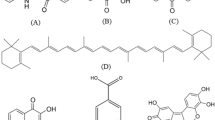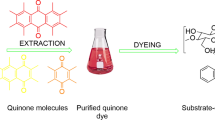Abstract
At the first level of Domitilla catacombs in Rome, in a peripheral region dating back to the mid-fourth century, is located the cubicle known as “dei fornai” (of the bakers). The cubicle presents some stylistic inconsistencies: subjects and themes suggest the attribution to a customer belonging to the upper class and having an important status, while some parts were made hastily and not well finished. In order to better shine a light on this matter, a diagnostic campaign was carried out, exclusively by means of in situ non-invasive methods and techniques. All the data reported in this work were collected after a laser cleaning of the wall paintings: some fibre optics reflectance spectroscopy (FORS) measurements were made before the cleaning but the poor data obtained are not here reported. After the laser cleaning, a combination of non-invasive techniques was employed in order to univocally identify pigments and materials. Colorimetry, fibre optics reflectance spectroscopy (FORS), infrared spectroscopy in external reflection mode (ER FT-IR), X-ray fluorescence spectrometry (XRF), digital microscopy (DM) and visible-induced luminescence (VIL) were therefore utilised in situ, and brought to unambiguously assign the colour palette.










Similar content being viewed by others
Notes
Geographical coordinates derived from Google Maps.
References
Accorsi G, Verri G, Bolognesi M, Armaroli N, Clementi C, Miliani C, Romani A (2009) The exceptional near-infrared luminescence properties of cuprorivaite (Egyptian blue), Chem. Commun, 3392–3394. http://pubs.rsc.org | https://doi.org/10.1039/B902563D.
Aceto M, Agostino A, Fenoglio G, Idone A, Gulmini M, Picollo M, Ricciardi P, Delaney J (2014) Characterisation of colourants on illuminated manuscripts by portable fibre optic UV–Visible-NIR reflectance spectrophotometry. Anal Meth 6(5):1488. https://doi.org/10.1039/c3ay41904e
Agnoli F, Calliari I, Mazzocchin G (2007) Use of different spectroscopic techniques in the analysis of Roman age wall paintings. Anal Chim 97:1–7
Aldrovandi A, Cagnini A, Celi C, Erbetti M, Galeotti M, Lalli C, Lanterna G, Porcinai S, Rizzi M, Salvadori B, Tosini I (2012) Applicazioni della spettroscopia infrarossa portatile nella diagnostica e monitoraggio dei beni Culturali: vantaggi e limiti. OPD Restauro 24:57–70
Amadori ML, Barcelli S, Poldi G, Ferrucci F, Andreotti A, Baraldi P, Colombini MP (2015) Invasive and non-invasive analyses for knowledge and conservation of Roman wall paintings of the Villa of the Papyri in Herculaneum. Microchem J 118:183–192. https://doi.org/10.1016/j.microc.2014.08.016
Amato SR, Bersani D, Lottici PP, Pogliani P, Pelosi P (2017) A multi-analytical approach to the study of the mural paintings in the presbytery of Santa Maria Antiqua al Foro Romano in Rome. Archaeom 59(6):1050–1064. https://doi.org/10.1111/arcm.12296
Bacci M (1995) Fiber optics applications to works of art. Sensors and Actuators 29:190–196
Bacci M (2000) UV–VIS-NIR, FT-IR, FORS Spectroscopies in: E. Ciliberto, G. Spoto (Eds.), Modern analytical methods in art and archaeology, Chemical Analysis Series, John Wiley and Sons, New York, vol. 155, 2000 pp. 321–362
Bonizzoni L, Colombo C, Ferrati S, Gargano M, Greco M, Ludwig N, Realini M (2011) A critical analysis of the application of EDXRF spectrometry on complex stratigraphies. X- Ray Spectrom 40:247–253. https://doi.org/10.1002/xrs.1320
Bracci S, Bartolozzi G (2020) Wall paintings – diagnostic and archeometric studies in: L. Sabbatini, I. D. van der Werf (Eds.), Chemical analysis in cultural heritage, pp. 253–271, Publisher De Gruyter, Berlin, Germany, https://doi.org/10.1515/9783110457537-11.
Casari G, Bracci S, Cagnini A, Galeotti M, Porcinai S, Picollo M (2011) From red to white, spectroscopic characterization of cinnabar and lead white mixtures by using XRF and FORS techniques, in: Art’11: 10th International Conference on non-destructive investigations and microanalysis for the diagnostic and conservation of cultural and environmental heritage, Florence, 13–15 April 2011, contribute PE2 (Proceedings on CD)
Cascioli S, Patrizi MG (2002) Restaurando in catacomba di cantiere in cantiere, in: R. Giuliani (Ed.), La conservazione delle pitture nelle catacombe romane. Acquisizioni e prospettive, Pontificia Commissione di Archeologia Sacra, Città del Vaticano 2002, pp. 49–62.
Cerrato EJ, Cosano D, Esquivel D, Otero R, Jimémez-Sanchidrián C, Rafael Ruiz J (2020) A multi-analytical study of a wall painting in the Satyr domus in Córdoba, Spain. Spectrochim Acta A 232(118):148. https://doi.org/10.1016/j.saa.2020.118148
Clementi C, Ciocan V, Vagnini M, Doherty B, Laurenzi Tabasso M, Conti C, Brunetti BG, Miliani C (2011) Non-invasive and micro-destructive investigation of the Domus Aurea wall painting decorations. Anal Bioanal Chem 401:1815–1826. https://doi.org/10.1007/s00216-011-5250-6
Colombo C, Bracci S, Conti C, Greco M, Realini M (2011a) Non-invasive approach in the study of polychrome terracotta sculpture. Employment of the Portable XRF to Investigate Complex Stratigraphy, X-Ray Spectrom 40:273–279. https://doi.org/10.1002/xrs.1336
Colombo C, Bevilacqua F, Brambilla L, Conti C, Realini M, Striova J, Zerbi G (2011b) Terracotta polychrome sculptures examined before and after their conservation work: contributions from non-invasive in situ analytical techniques. Anal Bioanal Chem 401:757–765. https://doi.org/10.1007/s00216-011-5085-1
Dyer J, Verri G, Cupitt J (2013) Multispectral imaging in reflectance and photo-induced luminescence modes: a user manual. https://www.britishmuseum.org/pdf/charisma-multispectral-imaging-manual-2013.pdf, (accessed January 2021).
Fontana R, Baraldi P, Fedi ME, Galeotti M, Omarini S, Zannini P, Striova J (2020) Notes on Vestorius’ blue – new findings and investigations. J Cult Herit 45:370–378. https://doi.org/10.1016/j.culher.2020.03.002
Gadsden JA (1975) Infrared spectra of minerals and related inorganic compounds, Butterworths ed
Garofano I, Perez-Rodriguez JL, Robador MD, Duran A (2016) An innovative combination of non-invasive UV–Visible-FORS, XRD and XRF techniques to study Roman wall paintings from Sevilla, Spain. J Cult Herit 22:1028–1039. https://doi.org/10.1016/j.culher.2016.07.002
Grissom CA (1986) Green earth, in: R. L. Feller (ed.), Artists’ pigments, A handbook of their history and characteristics, vol. 1, Cambridge University Press (UK), 141.
Helwing K (2007) Iron oxide pigments natural and synthetic. In: Berrie BH (ed) Artists’ pigments, a handbook of their history and characteristics, vol 4. Cambridge University Press(UK), pp 39–109
IFAC-CNR FORS database fiber optics reflectance spectra (FORS) of pictorial materials in the 270–1700 nm range, http://fors.ifac.cnr.it/index.php (accessed February 2021).
Mazzei B (1997) Storia di un travaglio conservativo. A proposito delle pitture dei cubicoli dei Sacramenti e delle cripte di Lucina, Rivista di Archeologia Cristiana LXXIII, 51–63.
Mazzei B (2016) Il cubicolo “dei fornai” nelle catacombe di Domitilla alla luce recenti restauri, in: Brandt O., Castiglia G. (Eds.), Acta XVI Congressus Internationalis Archaeologiae Christianae, Pontificio Istituto di Archeologia Cristiana, 2016, pp. 1927–1942, Città del Vaticano
Mazzocchin GA, Agnoli F, Mazzocchin S, Colpo I (2003) Analysis of pigments from Roman wall paintings found in Vicenza. Talanta 61:565–572. https://doi.org/10.1016/S0039-9140(03)00,323-0
Mazzocchin GA, Agnoli F, Salvadori M (2004) Analysis of Roman age wall paintings found in Pordenone. Trieste and Montegrotto, Talanta 64:732–741
Miliani C, Rosi F, Daveri A, Brunetti BG (2012) Reflection infrared spectroscopy for the non-invasive in situ study of artists’ pigments. Appl Phys A 106:295–307. https://doi.org/10.1007/s00339-011-6708-2
Montagner C, Bacci M, Bracci S, Freeman R, Picollo M (2011) Library of UV–Vis-NIR reflectance spectra of modern organic dyes from historic pattern-card coloured papers, Spectrochim. Acta A 79:1669–1680. https://doi.org/10.1016/j.saa.2011.05.033
Moretto LM, Orsega EM, Mazzocchin GA (2011) Spectroscopic methods for the analysis of celadonite and glauconite in Roman green wall paintings. J Cult Herit 12:384–391. https://doi.org/10.1016/j.culher.2011.04.003
Paradisi A, Sodo A, Artioli D, Botti A, Cavezzali D, Giovagnoli A, Polidoro C, Ricci MA (2012) Domus aurea, the ‘Sala delle maschere’: chemical and spectroscopic investigations on the fresco paintings. Archaeom 54(6):1060–1075. https://doi.org/10.1111/j.1475-4754.2012.00678.x
Patrizi MG, Mazzei B, Mascalchi M, Siano S (2011) Rimozione Laser di pellicole scure su dipinti murali in ambiente ipogeo: il caso di studio del “cubicolo dei fornai” nelle catacombe di Domitilla a Roma, in: A Brunetto (Ed.), APLAR3 – Applicazioni laser nel restauro, Il Prato, Saonara (PD), Italy, pp. 73–83
Patrizi MG, Senserrich Espuñes R, Mazzei B, Mascalchi M, Agresti J, Osticioli I, Siano S (2013) Il cubicolo “dei fornai” nelle catacombe di Domitilla a Roma considerazioni a conclusione della pulitura laser, in: A. Brunetto (Ed.), APLAR4—Applicazioni laser nel restauro, Il Prato Saonara (PD), Italy, pp.143–154
Pergola Ph (1990) Mensores frumentarii cristiani et Annona à la fin dell’Antiquité. Relecture D’un Cycle De Peintures, Rivista Di Archeologia Cristiana LXV I:167–184
Picollo M, Aceto M, Vitorino T (2020) UV–Vis spectroscopy in: L. Sabbatini, I. D. van der Werf (Eds.), Chemical analysis in cultural heritage, De Gruyter, Berlin (D), pp.253–271. https://doi.org/10.1515/9783110457537-11.
Pinna D, Bracci S, Driussi G, Galeotti M, Morabito Z, Realini M, Sacchi B, Santagostino A (2011) Combining non-destructive techniques and microsamples analyses to study a stone giant: the case of Nettuno in Piazza della Signoria (Firenze, Italy), in: Art’11: 10th International Conference on non- destructive investigations and microanalysis for the diagnostic and conservation of cultural and environmental heritage, Florence, 13–15 April 2011, 2011, contribute E8 (Proceedings on CD).
Sbroscia M, Cestelli-Guidi M, Colao F, Falzone S, Gioia C, Gioia P, Marconi C, Mirabile Gattia D, Loreti EM, Marinelli M, Missori M, Persia F, Pronti L, Romani M, Sodo A, Verona-Rinati G, Ricci MA, Fantoni R (2020) Multi-analytical non-destructive investigation of pictorial apparatuses of “Villa della Piscina” in Rome, Microchem. J., 153 104,450. https://doi.org/10.1016/j.microc.2019.104450.
Senserrich Espunes R, Mazzei B, Patrizi MG, Bracci S, Realini M, Sacchi B, Bartolozzi G (2014) The mural execution technique of the “dei Fornai” cubicle revealed by laser cleaning, in: Sainz-Jimenez (Ed.), The conservation of Subterranean Cultural Heritage, 2014, Taylor & Francis Group, London pp.73–81
Verri G (2009) The spatially resolved characterization of Egyptian blue, Han blue and Han purple by photo-induced luminescence digital imaging. Anal Bioanal Chem 394:1011–1021. https://doi.org/10.1007/s00216-009-2693-0
Acknowledgements
The authors are grateful to Maria Gigliola Patrizi (freelance restorer) and Rosa Senserrich-Espuñes (Universidad de Barcelona, Barcelona, Spain) for their contribution and technical support during the in situ campaign.
Giovanni Bartolozzi, Barbara Sacchi, Marco Realini and Barbara Mazzei would also dedicate this paper to the memory of their colleague and friend Susanna Bracci.
Author information
Authors and Affiliations
Corresponding author
Additional information
Publisher’s note
Springer Nature remains neutral with regard to jurisdictional claims in published maps and institutional affiliations.
Rights and permissions
About this article
Cite this article
Bartolozzi, G., Bracci, S., Sacchi, B. et al. Mural paintings of the cubicle “dei fornai” in Domitilla catacombs in Rome: a study via non-invasive techniques. Archaeol Anthropol Sci 13, 185 (2021). https://doi.org/10.1007/s12520-021-01447-5
Received:
Accepted:
Published:
DOI: https://doi.org/10.1007/s12520-021-01447-5




